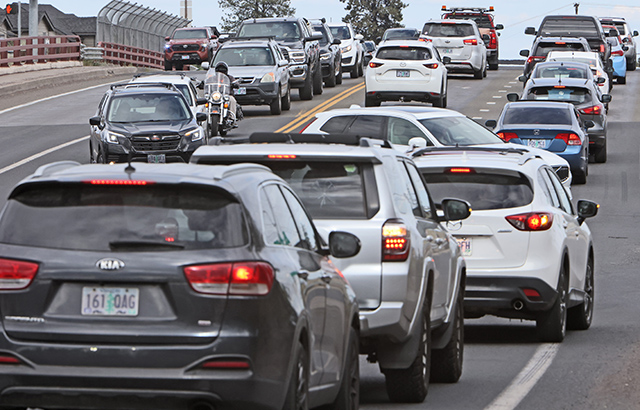Guest column: Strong connection between high-quality child care and healthy communities
Published 12:00 am Saturday, September 15, 2018

- Guest Column
As children in Central Oregon and across the country embark upon the start of a new school year, our kindergarten educators have been working hard to prepare their classrooms for the newest additions to our K-12 system of education. Though many of us remember kindergarten as the beginning of our educational careers, it’s important to note that the actual work of preparing kids for formal schooling really starts much earlier. Before stepping into a kindergarten classroom, many young children have already been exposed to myriad experiences that can set them on a path for future success — visits to their pediatrician, playdates and playgroups and, for some, child care, preschool or a kindergarten-transition opportunity. For too many families, however, finding and accessing high-quality child care and preschool opportunities is out of reach. In some places, they simply do not exist.
The absence of high-quality and affordable child care is so common in the United States that the Center for American Progress has coined the term, “child care desert,” to describe “neighborhoods or communities that are either lacking any child care options or have so few child care providers that there are more than three children for every licensed child care slot.” CAP analyzed data from 22 states and found that about half of Americans live in “child care deserts.”
Trending
Here in Central Oregon, I regularly hear from families who are in search of high-quality and affordable early learning and care programs. Waitlists of up to 500 families are not uncommon at our local child cares and preschools. While families may not be familiar with the term “child care deserts,” they experience firsthand the challenges of finding affordable early care and preschool options that will nurture their children while they work. This is especially frustrating when we know that children who participate in high-quality early learning programs experience more success in their K-12 years and beyond, including higher graduation rates, higher rates of employment and income, and better health.
Access to high-quality and affordable early learning and care programs isn’t just important for children — parents and our larger community benefit too. Nobel Prize-winning economist, James Heckman offers a helpful framework for understanding the social, health and economic benefits of these early investments. He found that early learning programs are not just about educational outcomes, but a “fundamental way to improve adult health.” Parents improve their productivity by missing fewer work days and pursuing further education. Communities benefit from the increased overall health of its members, a strong and healthy workforce, reduced crime and increased property values. Early learning and care programs attract homebuyers and increase property values by $13 for every dollar invested in local programs. Overall, investments in early learning generate a 7 to 13 percent return rate for our economy. When early learning and care programs are accessible to all, we all benefit. When they are not, we all suffer. Eight billion dollars a year is lost in wages due to inadequate child care access.
What can we do about it? We can start by being honest about the struggle. If you struggle or have struggled to find high-quality and affordable child care, preschool or aftercare, talk with others about it. Share your story, tell your neighbor and tell your employer. Talk with someone about it that you may not have told before. We don’t need to suffer in silence, and we don’t need to problem solve behind closed doors. When we collectively share our struggles and stories, we can find a way forward together. There are many of us working hard to improve our current reality and we need your help to succeed.
— Kendra Coates is regional director of PreK-3rd education for the High Desert Education Service District.








